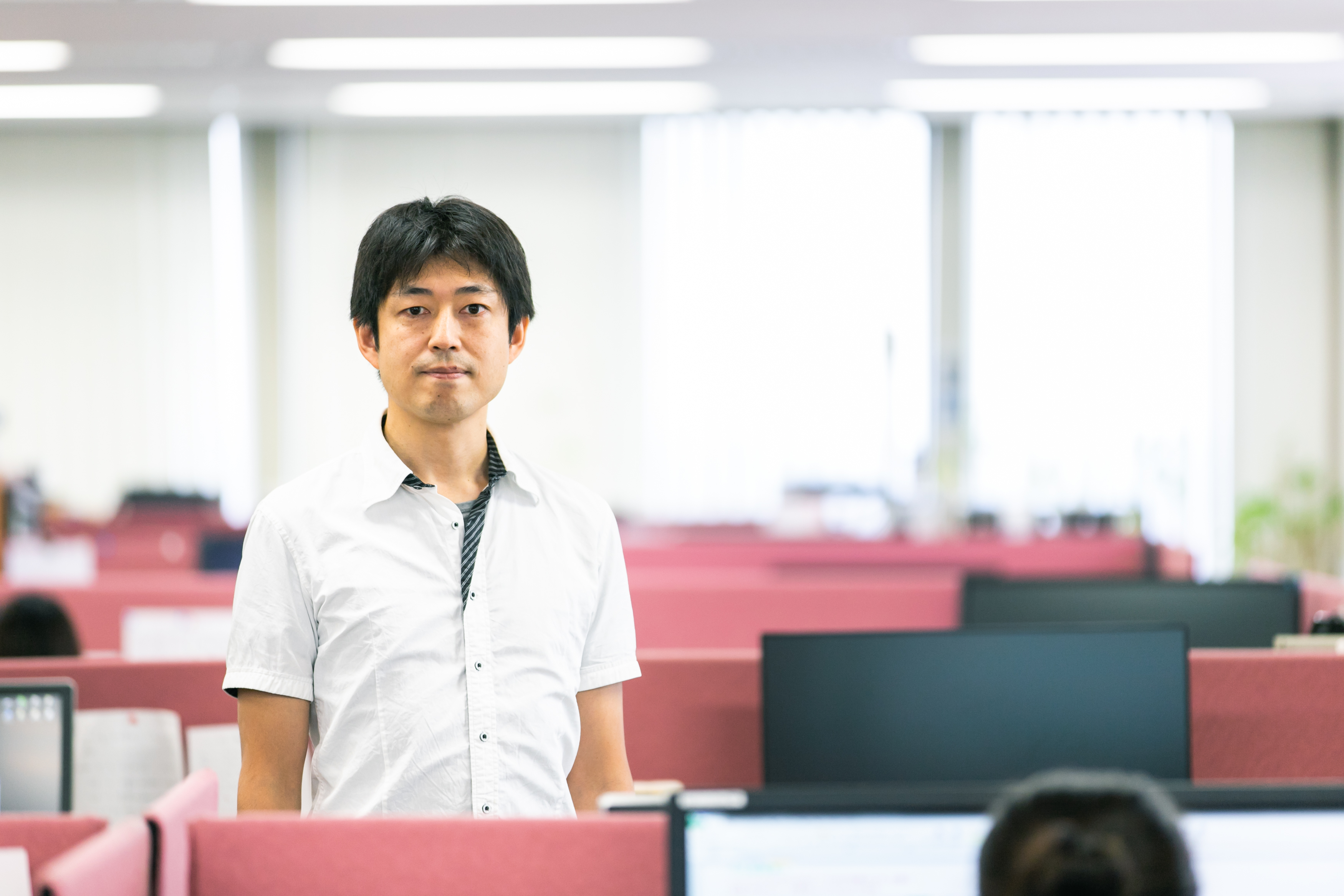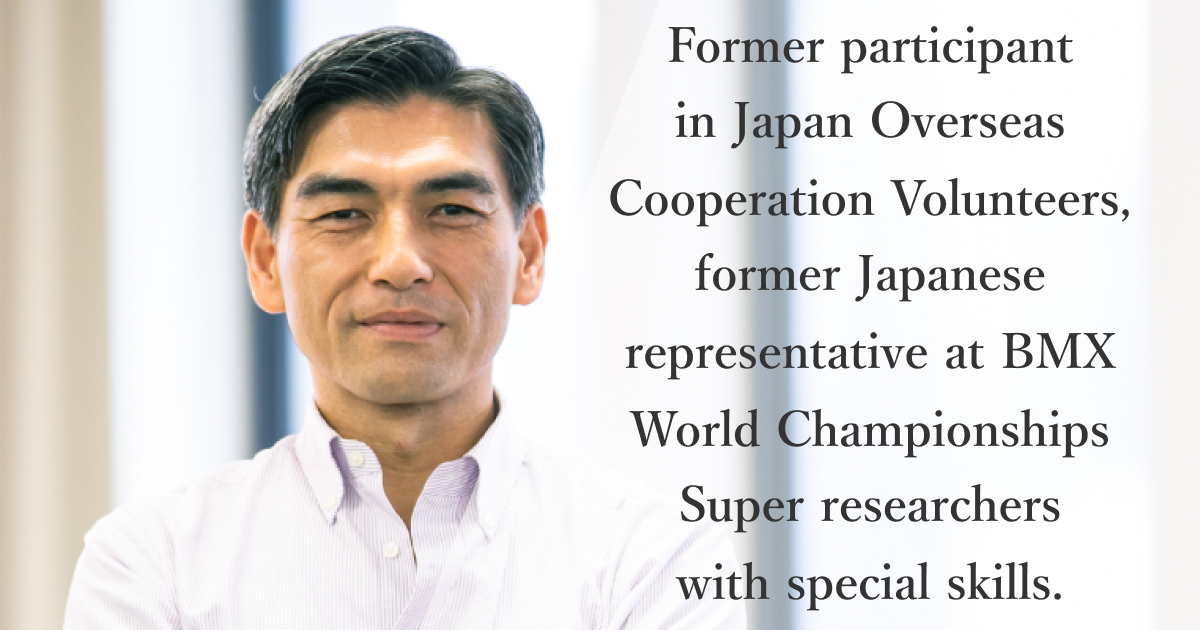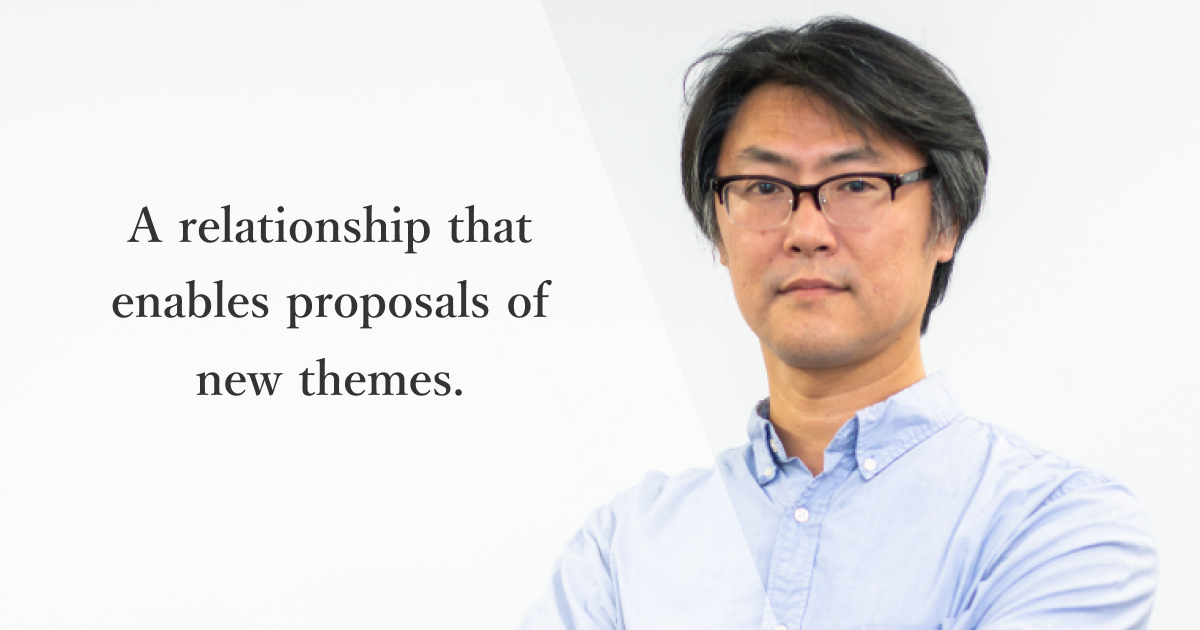Research and Development Group Senior Researcher
Image Recognition
Mitsuru Ambai
Mitsuru Ambai
PROFILE
Joined company in 2007
after receiving PhD from Keio University.
Engaged in research into image recognition
Connecting core research to practical use is the true joy of being a researcher
Mr. Ambai researches technology that will enable high precision image recognition with a low volume of calculation. Since joining the company, he has participated in the active spread of information, via such methods as presenting research papers at academic conferences, in and out of Japan. As one of the researchers representing DENSO IT Laboratory (hereafter, IT Lab), we asked Mr. Abe about the enjoyment he gets from pursuing practical application of his research while also being active in the academic world.
Connecting image recognition research to practical use

From undergraduate study to graduate and doctoral coursework, my academic career has been dedicated to research into image recognition. I received my PhD for research into ITS (intelligent transport systems). In particular, I looked into ways to measure the volume of automobile traffic flow using roadside cameras. Despite all the many potential changes in environment, the goal of ITS is to obtain measurements that are as accurate as possible, which means the focus of research is on creating robust image recognition algorithms.
Even now, since joining IT Lab, I’ve continued research into image recognition, but in truth, it wasn’t my intention to simply continue the research I did at the university level after joining the corporate world. On the contrary, my hope was to provide the core of academic research into image recognition technology with practical social applications. It was for that reason that I chose to become a corporate researcher, rather than remain at university institutions.
It is only when applied to practical use that research results truly gain value
I’ll talk just a little more about the research themes I engage with. In general terms, the major field is “autonomous cars,” but research is proceeding with expanding targets for recognition. When that happens, computation will of course also increase. So, how can we reduce the amount of computation needed? In other words, the challenge is how much we can reduce the energy consumed and heat generated while performing massive calculations. The goal of my research is to achieve that at the algorithm stage.
In addition, we hope that our research will one day lead to algorithm-based hardware manufacturing that can be made into competitive products. That’s exactly what a researcher should want. I believe that it is only when our research results find practical use that they will begin to have value.
As such, there are more than a few cases where my research results have been tied to practical use. The product lineup of the DENSO Group covers more than just automobile parts. It also extends to several other fields where the results of research into image recognition will apply. For example, robot arms on factory assembly lines. Also, while it’s not exactly a practical application, there are robots that participate in Shogi tournaments and point to the square they want to move to. The image recognition engine that I was involved with was used in those.
Finding links between “the seeds of research” and “the company’s needs”
These days, practical use has become our main focus, but when I first joined the company, I didn’t fully understand Denso’s needs and there was a lot of trial and error.
At IT Lab, there is a high importance placed on proposing your own themes for research. In the first few years, I proposed a lot of research themes and would continually present my results. At the same time, even when I couldn’t contribute directly to manufacturing, I always organized my results into a research paper and put the information out in to the world. In doing so, I was able to increase my interaction with people at headquarters and slowly began to understand their needs. When that happened, I felt for the first time that the seeds within my research and the needs at Denso had finally overlapped.
Summarizing results in research papers is a way to brush up on pursuing practical use
When you tie your research results together in a paper and clearly present them to the world, they will be accessed by those who see the presentation and that can lead to future work. As such, making presentations is a very important task for researchers and I continue to do that now.
One of the presentations that stood out the most for me was when I and my coworker Yoshida presented our research paper on correspondence point searching at an international conference in 2011.
Correspondence point searching is a technique that involves taking two images of the same object, photographed at different angles, and analyzing them to identify which portions of the images correspond to the same features. While this is a very important element of image recognition, the process was very difficult to carry out. In 2004, monumental research was released into SIFT (Scale Invariant Feature Transform) attributes, which had the potential to solve the problem, but they required a massive amount of calculation that used up a lot of memory. The research paper we presented at the international conference was one that addressed that issue.

Thanks to that paper, we were able to spread awareness of my own name and that of IT Lab to many people. It also gained us notice from people at Denso Headquarters and we received a lot of requests for consultation.
By making presentations, our research results reach the eyes of many people. And once it reaches those eyes, the research comes alive. As a corporate researcher, I believe that brushing up on core research results and making presentations to Denso Headquarters and other group companies with an eye on practical use is a duty of mine. For that reason, even as I continue writing research papers and presenting them outside of the company, I also pursue practical use within the company. Achieving both of those things equally is what I put the most effort into and it is also the most interesting part of my work.
Domestic and international academic conferences are not the only place where those results can be presented. Many times, presentations occur within IT Lab itself. One example is the “IT Lab Exhibition.” Twice a year at IT Lab, we invite employees from Denso and those outside the company to an exhibition where we not only present our research results but also take time to ask about technological problems and needs. It’s a very important event for us.
One of the attractions of working at IT Lab is that the company encourages us to present our research in this way and more than anything else, it’s the fact that we’re able to have discussions with researchers in and outside of the company, as well as communicate with staff at Denso Headquarters and the group companies who are pursuing practical use. The nature of Ideas for research is that they emerge from reading papers and talking with other people. We get inspiration for ideas from that process, in which a variety of information comes our way. In addition, it’s important to share your own ideas with others and deepen them through discussion. Since IT Lab is a place where that is easily achieved, it is a great environment for researchers.
Desire to work with people who hold their own research vision
At IT Lab, there aren’t many cases when individuals are assigned a research theme. It thus follows that people must generate those themes themselves.
That’s why it’s important that potential candidates have their own vision for what they want to accomplish. Of course, generating themes yourself carries its own struggle. With research themes, it’s easy to see presentations by other people and criticize certain aspects, but very difficult to put together a story that will be understood by everyone and communicate it yourself. Still, I think a good candidate is someone who has a vision clear enough to present those stories.
In addition, I think the right person is someone who not only has a deep interest in technology and can participate in advanced discussions, but also someone who is able to confront the problems that Denso faces and work with passion to connect their work to practical use. That’s because one of the most enjoyable parts of working for IT Lab is that we have many opportunities to actually deal with those problems. Ideally, I would like to work with someone who does not only academic research, but has a strong desire to bring new technology into manufacturing sites.








